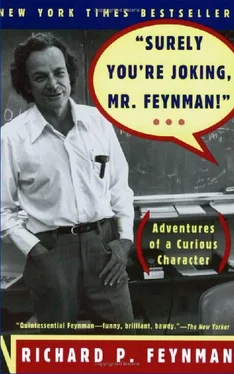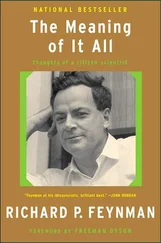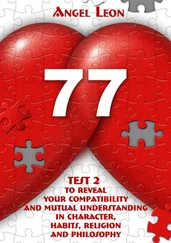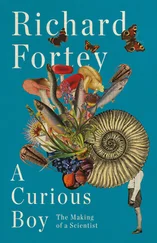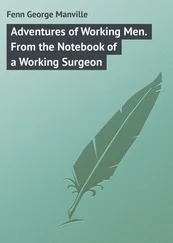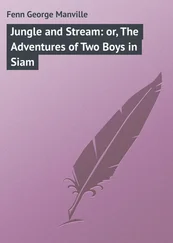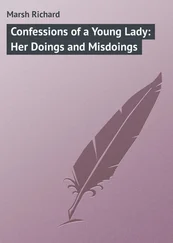I tried at one point to make the ants go around in a circle, but I didn’t have enough patience to set it up. I could see no reason, other than lack of patience, why it couldn’t be done.
One thing that made experimenting difficult was that breathing on the ants made them scurry. It must be an instinctive thing against some animal that eats them or disturbs them. I don’t know if it was the warmth, the moisture, or the smell of my breath that bothered them, but I always had to hold my breath and kind of look to one side so as not to confuse the experiment while I was ferrying the ants.
One question that I wondered about was why the ant trails look so straight and nice. The ants look as if they know what they’re doing, as if they have a good sense of geometry. Yet the experiments that I did to try to demonstrate their sense of geometry didn’t work.
Many years later, when I was at Caltech and lived in a little house on Alameda Street, some ants came out around the bathtub. I thought, “This is a great opportunity.” I put some sugar on the other end of the bathtub, and sat there the whole afternoon until an ant finally found the sugar. It’s only a question of patience.
The moment the ant found the sugar, I picked up a colored pencil that I had ready (I had previously done experiments indicating that the ants don’t give a damn about pencil marks—they walk right over them—so I knew I wasn’t disturbing anything), and behind where the ant went I drew a line so I could tell where his trail was. The ant wandered a little bit wrong to get back to the hole, so the line was quite wiggly unlike a typical ant trail.
When the next ant to find the sugar began to go back, I marked his trail with another color. (By the way he followed the first ant’s return trail back, rather than his own incoming trail. My theory is that when an ant has found some food, he leaves a much stronger trail than when he’s just wandering around.)
This second ant was in a great hurry and followed, pretty much, the original trail. But because he was going so fast he would go straight out, as if he were coasting, when the trail was wiggly. Often, as the ant was “coasting,” he would find the trail again. Already it was apparent that the second ant’s return was slightly straighter. With successive ants the same “improvement” of the trail by hurriedly and carelessly “following” it occurred.
I followed eight or ten ants with my pencil until their trails became a neat line right along the bathtub. It’s something like sketching: You draw a lousy line at first; then you go over it a few times and it makes a nice line after a while.
I remember that when I was a kid my father would tell me how wonderful ants are, and how they cooperate. I would watch very carefully three or four ants carrying a little piece of chocolate back to their nest. At first glance it looks like efficient, marvelous, brilliant cooperation. But if you look at it carefully you’ll see that it’s nothing of the kind: They’re all behaving as if the chocolate is held up by something else. They pull at it one way or the other way. An ant may crawl over it while it’s being pulled at by the others. It wobbles, it wiggles, the directions are all confused. The chocolate doesn’t move in a nice way toward the nest.
The Brazilian leaf-cutting ants, which are otherwise so marvelous, have a very interesting stupidity associated with them that I’m surprised hasn’t evolved out. It takes considerable work for the ant to cut the circular arc in order to get a piece of leaf. When the cutting is done, there’s a fifty-fifty chance that the ant will pull on the wrong side, letting the piece he just cut fall to the ground. Half the time, the ant will yank and pull and yank and pull on the wrong part of the leaf, until it gives up and starts to cut another piece. There is no attempt to pick up a piece that it, or any other ant, has already cut. So it’s quite obvious, if you watch very carefully that it’s not a brilliant business of cutting leaves and carrying them away; they go to a leaf, cut an arc, and pick the wrong side half the time while the right piece falls down.
In Princeton the ants found my larder, where I had jelly and bread and stuff, which was quite a distance from the window. A long line of ants marched along the floor across the living room. It was during the time I was doing these experiments on the ants, so I thought to myself, “What can I do to stop them from coming to my larder without killing any ants? No poison; you gotta be humane to the ants!”
What I did was this: In preparation, I put a bit of sugar about six or eight inches from their entry point into the room, that they didn’t know about. Then I made those ferry things again, and whenever an ant returning with food walked onto my little ferry I’d carry him over and put him on the sugar. Any ant coming toward the larder that walked onto a ferry I also carried over to the sugar. Eventually the ants found their way from the sugar to their hole, so this new trail was being doubly reinforced, while the old trail was being used less and less. I knew that after half an hour or so the old trail would dry up, and in an hour they were out of my larder. I didn’t wash the floor; I didn’t do anything but ferry ants.
Part 3.
Feynman, the Bomb, and the Military
When the war began in Europe but had not yet been declared in the United States, there was a lot of talk about getting ready and being patriotic. The newspapers had big articles on businessmen volunteering to go to Plattsburg, New York, to do military training, and so on.
I began to think I ought to make some kind of contribution, too. After I finished up at MIT, a friend of mine from the fraternity, Maurice Meyer, who was in the Army Signal Corps, took me to see a colonel at the Signal Corps offices in New York.
“I’d like to aid my country sir, and since I’m technically minded, maybe there’s a way I could help.”
“Well, you’d better just go up to Plattsburg to boot camp and go through basic training. Then we’ll be able to use you,” the colonel said.
“But isn’t there some way to use my talent more directly?”
“No; this is the way the army is organized. Go through the regular way.”
I went outside and sat in the park to think about it. I thought and thought: Maybe the best way to make a contribution is to go along with their way. But fortunately I thought a little more, and said, “To hell with it! I’ll wait awhile. Maybe something will happen where they can use me more effectively.”
I went to Princeton to do graduate work, and in the spring I went once again to the Bell Labs in New York to apply for a summer job. I loved to tour the Bell Labs. Bill Shockley the guy who invented transistors, would show me around. I remember somebody’s room where they had marked a window: The George Washington Bridge was being built, and these guys in the lab were watching its progress. They had plotted the original curve when the main cable was first put up, and they could measure the small differences as the bridge was being suspended from it, as the curve turned into a parabola. It was just the kind of thing I would like to be able to think of doing. I admired those guys; I was always hoping I could work with them one day.
Some guys from the lab took me out to this seafood restaurant for lunch, and they were all pleased that they were going to have oysters. I lived by the ocean and I couldn’t look at this stuff; I couldn’t eat fish, let alone oysters.
I thought to myself, “I’ve gotta be brave. I’ve gotta eat an oyster.”
I took an oyster, and it was absolutely terrible. But I said to myself, “That doesn’t really prove you’re a man. You didn’t know how terrible it was gonna be. It was easy enough when it was uncertain.”
Читать дальше
